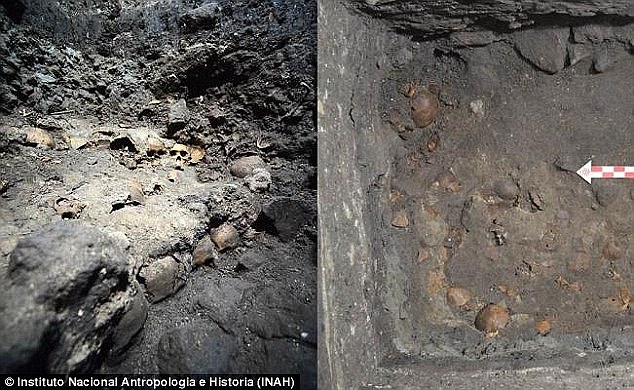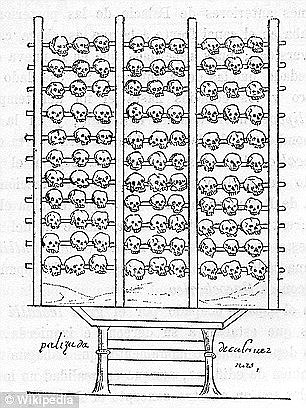Many historians, researchers, and archaeologists have discovered over the years that ancient people who lived in Mexico carried out sacrificial rituals. For example, it is known that the Aztecs sacrificed their prisoners of war at the Great Temple of Tenochtitlan immediately after battle.
However, a recent study suggests that the ancient people, offered the lives of people who were close to them as well. After analyzing remains of people who had lived in the city and were sacrificed between the years of 1469 and 1521, researchers found that many of the victims came from conquered lands. But a lot of them also lived in the Valley of Mexico, among the Aztecs.
One of the lead archaeologists doing the study, Alan Barrera, told a news station that many people thought that sacrifices were mainly the result of war; the victims were people taken from the populations, conquered by the Mexicans who ruled the Tenochtitlan area. He added that it was also assumed that prisoners of war were brought right from their places of origin and sacrificed shortly after that.
However, new analysis from bone fragments found suggest that some of the people, who were sacrificed had actually lived among the Mexicans for more than six years. Researchers from the National Institute of Anthropology took bone samples from skulls and teeth of six sacrificed people at the temple. The temple wall was complete with carved skulls.

It is believed that the victims lived during the reigns of the second Aztec emperor Motecuhzoma Ilhuicamina, a famed warrior known as Axayacatl, and Moctecuhzoma Xocoyotzin. The Aztec’s first contact with Europeans happened when Moctecuhzoma Xocoyotzin was ruling. He lived between 1466 and 1520 and was killed right when the Spanish Conquest of Mexico started.
The bones and teeth were put through a strontium isotope analysis at the National Autonomous University of Mexico’s Geophysics Institute. The process allowed researchers to reveal the origin of the sacrificed people. The results showed that they were not just imprisoned warriors, but it is believed that they were servants for the elite. Another possibility is that the foreign victims were not warriors, but were high ranking prisoners who served the Aztec elite before they were sacrificed.
Another interesting result was that the sacrifices were not only warriors that were sacrificed, there were also women, children, and the elderly.
The previous year, archaeologists found a trophy rack full of sacrificed human skulls in the Great Temple of Tenochtitlan, which is otherwise known as the Templo Mayor Aztec. These racks were put together and displayed after the sacrifices were done. They would put the severed heads on wooden poles, by pushing them through the sides of the skulls.

An archaeologist studying the finds, Eduardo Matos, said that the heads were displayed to show the might of the rulers. The heads were displayed right in the open for any visitors coming to the large city. The interesting thing is how the skulls were arranged on the platform. They were all looking inward, positioned in a circle. However, the experts don’t know what was at the center originally.
One archaeologist assisting with the excavation of the platform, Raul Barrera, said that currently there are about 35 skulls, but there are many more in the layers that the platform was found on. The platform had been partially excavated under the floor of a three-story colonial era house. Some of the excavations began in 1914 in the area. Each excavation showed evidence that the house was near a ceremonial site.
A typical ritual included the sacrificial victims being taken to the top of a temple by four priests. The priests would then lay them down on a stone slab. The victim’s abdomen would then be sliced open by a fifth priest using a ceremonial flint knife. The knife was inserted right through the diaphragm, splitting the chest. The priest would then tear out the heart, still beating. The heart would then be placed in a bowl held by a statue of the honored god. The body was then thrown down the temple’s stairs, landing at the base of the pyramid.